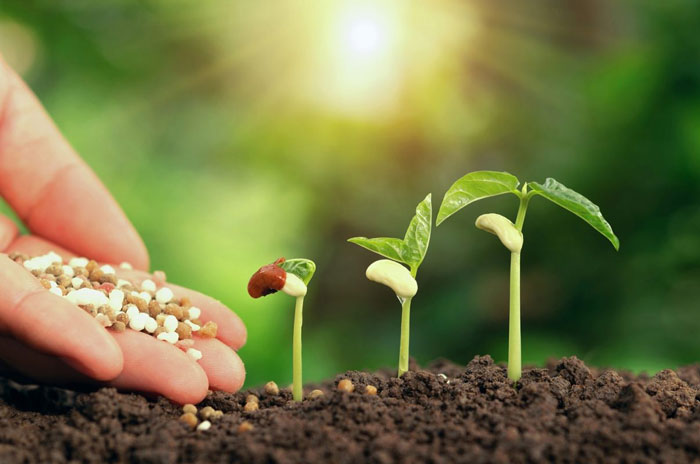Soil biology is a science that studies soil organisms, their role and function in soil, and in other words, it is soil biology. But the new definition that has been presented today is the examination and identification of living organisms that live in the soil, as well as the examination of the circulation of nutrients in the soil and their ability to be absorbed by the plant, and finally the effect of the set of soil pests on agricultural production and sustainable ecosystem. be
Soil biology is a branch of soil science. The emphasis of this branch of science on soil organisms includes: microorganisms, including: bacteria, fungi, algae, protozoa, viruses and soil fauna (soil animals).
In general, soil consists of four parts: solid (organic and inorganic), liquid (H2O), gas (O2) and living organisms. These four components form the soil ecosystem. According to the definition of ecosystem, it includes a group of living organisms and the interaction between organisms and the surrounding environment, and soil is considered a part of the ecosystem. Ecosystems are either aquatic or terrestrial, in which living organisms play a significant role in energy transfer and conversion.
In terms of the presence of some vital characteristics, soil is a living organism that is part of terrestrial ecosystems. The reasons for soil being alive are:
The number of living organisms in the soil is high
Soil organisms (plants, animals, microbiome…) are very diverse
Diffusion and dispersion in the soil mass is very wide. A good and fertile soil is not sterile and contains a large number of living organisms that are highly dispersed in the vicinity of organic matter and their number is high.
Continuous activity: the general activity of the organisms in the soil has not stopped at any time and the activity continues in different seasons, but they have different intensity and weakness.
History of soil biology:
Soil biology is not a very old science and dates back to about 100 years ago. In recent years, geologists have seen a lot of progress and diversity in this science. This science from basic issues about nitrogen and organic matter to the study of soil enzymes, soil rhizosphere organisms and plant phyllosphere, the role of microorganisms in the stability of soil grains and the formation of soil structure, decomposition of pesticides and other pollutants, microbial ecology, change and the conversion of elements such as phosphorus, sulfur, and low consumption elements and finally microbial effects on the environment.
soil biotal organisms:
In soil science, in order to understand and become familiar with soil biology issues, they first study organisms and identify them. Knowledge of soil organisms is not always systematic and usually biochemical and chemical reactions that take place in soil are important in soil biology. Because the main axis of soil biology is living organisms, their activity in soil and ecosystem.
Also, the number, diversity and relative composition of soil organisms is a function of soil properties (moisture, ventilation, acidity, nutrients…), climatic characteristics and vegetation cover of the soil surface.
The country of Iran has an arid and semi-arid climate, so that the average annual rainfall in Iran is about one third of the world average, while the evaporation and transpiration potential is three times the global average, for this reason, the content of organic matter in most of Iran’s soils is negligible. And in about 60% of Iran’s agricultural lands, the amount of organic carbon is less than 1%, and in more than 84% of soils, it is less than 1.5% of organic carbon. Most soil organisms nutritionally belong to a group that depends on the presence of organic matter in the soil for their activity and survival.
On the other hand, by improving physical properties (increasing ventilation, water retention capacity in the soil…) and chemical properties (release of nutrients, absorption and storage of nutrients…) it plays an important role on the population and activity of soil organisms. to do Therefore, the lack of organic matter in the agricultural lands of the country is the main problem of poor soils in terms of the number of soil organisms and biodiversity.
References:
An overview of soil biology research and biological characteristics of Iranian soils
Saleh Rastin, 1357, soil biology (soil organisms and their role in the circulation of elements), Tehran University Publications
Ali Asgharzadeh, 1376. Soil Microbiology and Biochemistry, Tabriz University Publications (translation)

بدون دیدگاه